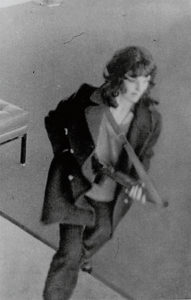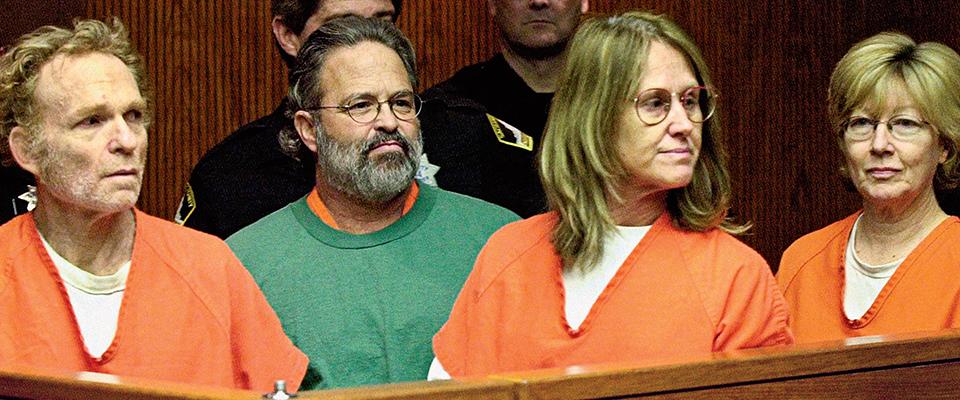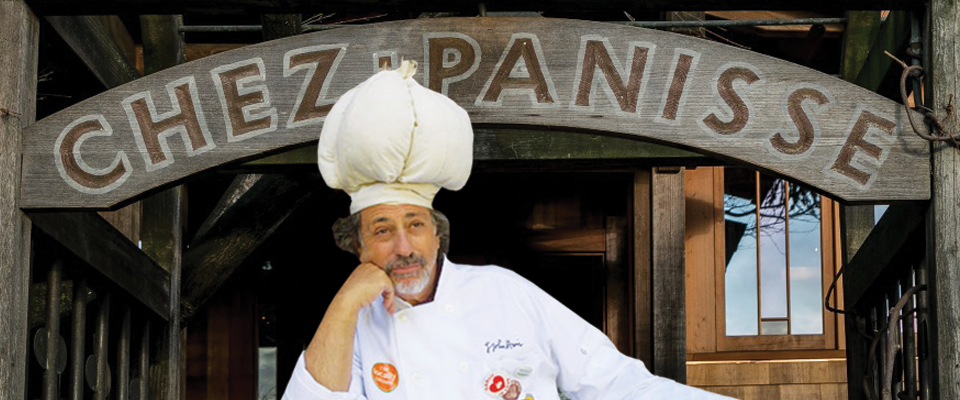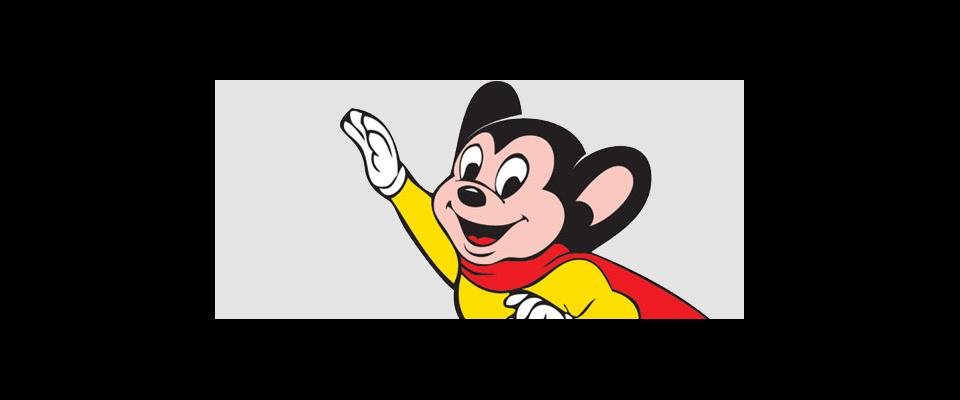They were all in their 50s now, hair graying or even white, sitting in a courtroom in Sacramento, waiting to be sentenced for a crime they had committed nearly 30 years earlier. Near the judge’s bench stood a large color photograph of Myrna Opsahl, whose life had ended at age 42 on the morning of April 21, 1975. She had been killed by a shotgun blast during a robbery of Crocker National Bank in Carmichael.
The eyes in the portrait gazed past the four defendants who had just pleaded guilty in the second-degree to her murder: private investigator William Harris, just turned 58; his ex-wife, Emily Harris, now Emily Montague, 56, a computer consultant to Hollywood movie companies; Michael Bortin, 54, a flooring contractor from Oregon; and Sara Jane Olson (formerly Kathleen Ann Soliah), 56, a mother of three from Minnesota. Olson was already doing time for attempting to bomb police cars in Los Angeles back in her halcyon days, when she and her co-defendants were part of a militant group that called itself the Symbionese Liberation Army, or SLA.
Sentencing was in February 2003. The judge handed down prison terms from six to eight years, facts I dutifully reported to readers of the San Francisco Chronicle. It felt like old news. America had new enemies, after all. A year and a half earlier, the Twin Towers had been brought down by Islamic terrorists. American troops were searching for Osama bin Laden in Afghanistan, and U.S. forces would soon invade Iraq. Compared to Islamic jihadists, these aging radicals seemed quaint. It was easy to forget that the country was once as riveted by news of these homegrown militants as it now was to the exploits of al-Qaeda.
They signed off with what became the SLA’s signature flourish: “Death to the fascist insect that preys upon the life of the people.” Around the newsroom, this became an all-purpose slogan for telling off editors.
I joined the Chronicle in 1973 as a general assignment reporter. By then, the idealism of the previous decade had long since given way to much darker days, fed in no small part by the intense anger and protest against the war in Vietnam. The ’70s were rung in with a spasm of violence, a portent of the awfulness to come: In February 1970, a bomb went off at the Berkeley police station. Three days later, another bomb killed a 44-year-old police sergeant at San Francisco’s Park Police Station. In March, a bomb factory of the Weather Underground blew up a townhouse on West 11th Street in New York City, killing three of the bomb makers. Two months later, a few days after President Nixon announced the invasion of Cambodia, the National Guard killed four students during a protest at Kent State University in Ohio. There were more bombs: A researcher was killed in a bombing at the Army Mathematics Research Center at the University of Wisconsin–Madison. One FBI agent told me he had calculated there was a bombing every eight days in the Bay Area. Another agent described the Bay Area as “the Belfast of North America.”
By the time I joined the paper, there were so many fringe movements and splinter groups in the Bay Area that the editors made a beat out of it, to which they assigned reporter Tim Findley. Findley was well known in radical circles, in part because of his apparent sympathy to the cause. When Chronicle reporter Don Wegars was sent to cover a demonstration at Sproul Plaza on the UC Berkeley campus, the assigning editor (Dick Hemp) told him, “You may see our newest hire, guy named Tim Findley.” Wegars said, “Good. There’ll be 10,000 people there. How will I know him?”
“It shouldn’t be difficult,” Hemp said. “He’s one of the speakers.”
When Patty Hearst was kidnapped on the night of February 4, 1974, it threw the newsroom into convulsions. This wasn’t just any kidnapping. Patty, enrolled as a sophomore at Berkeley, was the daughter of Randolph Hearst, then editor and president of the San Francisco Examiner. The Examiner, an afternoon paper, was ostensibly in competition with the higher-circulation morning paper (the Chronicle), but in fact the two papers shared profits in a joint operating agreement. The newsrooms were separate, but we all worked in the same cluster of buildings. And when it came to the Patty Hearst story, the Chronicle was hesitant to publish anything without first checking with its bedmates. Bill Workman, an ace Chronicle police reporter in the Oakland bureau at the time, had the kidnapping story within an hour of the heiress being snatched from her home, and phoned it in to rewrite. There was plenty of time to get it into late editions, but the paper embargoed the story and didn’t run anything until February 6, a day and a half after the event.
Tim Findley had the jump on other reporters covering the Hearst abduction. He had already investigated the unfathomable murder, in November 1973, of Marcus Foster, the first African-American superintendent of schools in Oakland. That case had resulted in the arrest and conviction of two SLA members, Joseph Remiro and Russell Little. (Little’s conviction was overturned on appeal and he was acquitted in a retrial.) It was Findley who figured out that the SLA was headed by one Donald DeFreeze, an escaped convict who had been doing a stretch for armed robbery. DeFreeze, who was African American, led a gaggle of white middle-class idealists, many of them in thrall to prisoners and ex-prisoners, and together they hatched the plan to use Hearst to buy the freedom of their jailed comrades, Remiro and Little.
In the puffed-up style of revolutionaries everywhere, the SLA communiqué announcing the capture read:
Subject: prisoner of war; Target: Patricia Campbell Hearst – Daughter of Randolph Hearst, corporate enemy of the people; Warrant Order: Arrest and protective custody; and if resistance, execution; Warrant Issued by: The Court of the People.
They signed off with what became the SLA’s signature flourish:
Death to the fascist insect that preys upon the life of the people.
Around the newsroom, this sign-off became an all-purpose slogan for telling off editors. Some of the more literary types argued that perhaps it should have been “insect who preys upon …” but that kind of banter largely went by the wayside in the ongoing tension of covering a story in which the life of the boss’s daughter was at stake. The editors of both papers were quite aware of Randy Hearst’s plaintive admonition, “Don’t get my daughter killed.”

The prisoner exchange was never seriously considered by law enforcement, and so the SLA changed tack, demanding instead that Randy Hearst feed the Bay Area’s poor. The result was a program called People In Need, to which Hearst donated millions of dollars’ worth of packaged food. It was a colossal madhouse. I remember watching men flinging packages of food out into a crowd of people, and the frenzied surge as women and children hoped to catch one of the bundles. Some of the food hit the ground and the crowd lunged for it. It was like a Hieronymus Bosch painting: chaotic and disorganized, sad and angry at the same time, an apt reflection of a father’s desperation.
The lives of Randolph and Catherine Hearst were now public. The street in front of their large house in the moneyed San Francisco suburb of Hillsborough was the seat of around-the-clock coverage, as dozens of radio, television, magazine, and newspaper reporters camped on the Hearsts’ doorstep. The phone company came in and rigged up direct lines for all the media outlets that could afford it. Phones dangled from leafy branches and the cry would go up periodically, “Hey, Chronicle [or L.A. Times or Mercury], your tree is ringing.”
The SLA, meanwhile, had its own designs for Ms. Patty Hearst, she of the tony upbringing, the girl whose cloistered life as a newspaper heiress was about to take an abrupt and dangerous turn.
At 2 p.m. on Monday, April 15, 1974, I arrived at the newsroom to pull a swing shift. Usually pretty busy by that time of day, the place was nearly empty. There were just a few editors around and maybe two or three rewrite men. I sat down and asked the guy to my right where everybody was. He laughed and said, “If you were writing a novel, just put it away. Forget it. This one’s much better. And it’s true.”
What’s true?
“Patty Hearst just robbed a bank,” he said, “with her gang from the SLA.”
What?!
The CBS affiliate started broadcasting footage live, nationwide. For mass media spectacle, there had never been anything like it. More than 9,000 rounds were exchanged; and as the battle roared on, we were watching it live, in the newsroom. Suddenly, the house caught fire. It was a holocaust.
The SLA, along with a fierce-looking Patricia Campbell Hearst carrying an M1 carbine, had just held up a San Francisco branch of the Hibernia Bank—a bank, incidentally, that was owned by the Tobin family; Patricia Tobin was Patty’s closest friend. A few minutes later, an editor came by and said, “Get out there; get out to the Sunset district. We’re trying to see if the SLA is still around.” Fat chance. But I went, and joined about a hundred other reporters frenziedly knocking on doors—anyone seen Patty Hearst?—and watched a like number of FBI agents and San Francisco cops do the same thing.
Everything had changed. Patty had joined her kidnappers, or so it seemed. It gave rise to all kinds of speculation—had she been in on it from the beginning? Or was she brutalized and brainwashed? Who were these people? This last, at least, was known. Findley had figured out the identities of the SLA, including their noms de guerre: DeFreeze was “Cinque”; Angela Atwood, “General Galina”; Camilla Hall, “Gabi”; Bill Harris, “Teko”; Emily Harris (Bill’s then-wife), “Yolanda”; Nancy Ling Perry, “Fahizah”; Patricia Soltysik, “Mizmoon”; Willie Wolfe, “Cujo”; and finally Patricia Hearst, “Tania.” It was Tania everyone cared about.
Findley and another reporter, Paul Avery (already famous for his coverage of the Zodiac murder case), were the two main SLA reporters. Although the duo were practically joined at the hip by the sensational story, there was constant friction between them; Avery was, by nature, a police reporter, and Findley was steeped in the counterculture. But however different in temperament, their egos kept them chasing the story and landing them on Page One.
After the Hibernia Bank job, the SLA, now squarely in the law enforcement spotlight, fled the Bay Area. A month later, they surfaced in Los Angeles. Bill and Emily Harris were caught shoplifting at a sporting goods store, and Patty Hearst, standing guard outside, sprayed the place with gunfire so that Harris and his wife could escape. The six other members of the SLA were hiding in a house elsewhere in Los Angeles, and police, having learned of their whereabouts, descended on the place en masse.
This was the endgame. The cops tried to get the SLA to come out. When that failed, they fired tear gas grenades, provoking gunfire from the house. By now, Los Angeles TV station KNXT was on the scene. The CBS affiliate had just received a new high-tech minicam and started broadcasting footage live, nationwide. For mass media spectacle, there had never been anything like it. More than 9,000 rounds were exchanged; and as the battle roared on, we were watching it live, in the newsroom, while Avery was flying down there to cover it. Suddenly, the house caught fire. It was a holocaust, in the true meaning of the word. That was it. The main force of the SLA was found burned and shot to death in a crawl space.

The newsroom was consumed by the story as people from all across California called in sightings of Hearst and the Harrises, who had vanished after the shootout. Avery and Findley sent reporters to check out this apartment or that house, convinced they had once been hideouts for the SLA. None of the leads panned out. We spent hours in county courthouses, running public-records checks on names that Findley and Avery came up with as possible SLA hangers-on or safe-house owners. It all came to zilch.
We know now that Patty Hearst and the Harrises fled east to a farmhouse in Pennsylvania, helped by a charismatic “sports activist” and Berkeley Ph.D. named Jack Scott. By now, they had attracted the support of the New World Liberation Front and many SLA groupies. Kathleen Soliah was a charter member of this set, having proclaimed her fealty during a speech at a memorial rally at Willard Park (a.k.a. Ho Chi Minh Park) in Berkeley two weeks after the fiery Los Angeles shootout: “SLA soldiers, I am with you and we are with you.” When the SLA soldiers returned from the east in the fall of 1974, Soliah joined them in a series of safe houses in Sacramento. Then, in August 1975, she traveled to Los Angeles and, prosecutors say, planted bombs under a pair of police cars. They didn’t go off.
The hunt for Patty Hearst ended a month later, when she and the Harrises were arrested in San Francisco. Soliah vanished, eventually turning up in Minnesota as Sara Jane Olson. There she married a physician and raised three children, leading what appears to have been a pretty normal life. Her past only caught up with her in 1999, after she was profiled on America’s Most Wanted. I covered her case for the next three or four years as it wound through the Los Angeles court system (Olson eventually pleaded guilty to “use of a destructive device with the intent to murder”) and then through the Sacramento District Attorney’s office on the Opsahl murder.
All these years later, I was still trying to understand the SLA’s motivations. One of the people I went to for insight was Terry Anderson, a Texas A&M University historian and author of The Movement and the Sixties. I asked him how we got from the idealism of the Free Speech Movement to kidnappings, executions, and bank robberies that characterized the radical ferment of the ’70s. “All these movements start out moderate and nonviolent,” he said. “Then they get frustrated and a radical fringe develops.… These people get much more radicalized because they’re not getting what they want.”
At the 2003 sentencing, Emily Montague, who had held the shotgun that killed Opsahl, told the judge, “I will be sorry for the rest of my life,” before breaking into tears. At the time of the killing, she had reportedly scoffed: “She was a bourgeois pig anyway. Her husband was a doctor.”
With the SLA, of course, it was never clear what they wanted—it seemed to be a hodgepodge of plaints from the ’60s. In one of the safe houses, investigators found a handwritten “Study Sheet,” on which someone had made notes. The topics for study included Marxism-Leninism, Fascism, National Question, Third World Leadership, and The Woman Question. In the closet of another, according to L.A. prosecutors’ trial brief, police found what they described as “a virtual guerrilla warfare supply room. Hundreds of rounds of ammunition, automatic and semiautomatic rifles, shotguns, hand guns, bomb making supplies, explosive powder and gel, and bomb literature were among the hundreds of items seized.” But by the time Cinque’s gang took Patty Hearst from her apartment and stuffed her into the trunk of a Chevy convertible, the tide was already turning in American politics. The draft ended in 1973. U.S. involvement in Vietnam was winding down. President Nixon would resign in August 1974, during the height of the SLA’s fugitive life. What was there left to bomb for?
In 2000, another Chronicle reporter, Jaxon Van Derbeken, and I were assigned to look into the murders of two San Francisco police officers—the slaying of Sergeant Brian McDonnell at Park Station in February 1970, and the killing of Sergeant John Young at the Ingleside Police Station in August 1971. There was talk of possible indictments involving members of militant groups from the ’70s. For weeks I called up old radicals, most of whom were now as sedate and conventional as the ex-SLA four in that Sacramento courtroom.
One man I talked to was now living in the south. When I reached him by phone, the worry was palpable. “I don’t really see the point of this,” he said. “I’m not interested in publicity about those days. I don’t think I can be any help on this. One’s personal situation is delicate. I don’t usually write [it] down on job applications.…” He very quickly got off the phone.
In covering all this, two women stood out in my mind: Sara Jane Olson and Patty Hearst. Both came from comfortable backgrounds (Hearst’s more than just comfortable) and they both ended up, for one reason or another, on the ragged edge of the revolution. Hearst was sentenced to seven years in prison for the Hibernia Bank robbery, but President Carter commuted her sentence and she was released after serving 22 months. President Clinton later pardoned Hearst, which effectively wiped her conviction off the books. Olson was released from custody in March 2009, after serving seven years in prison.
Now they’re back on familiar turf—not safe houses, but the safety of their homes. Hearst turned 60 in February and leads a largely private life outside New York City. Sara Jane Olson, now 67, is back in Minnesota with her grown daughters and her husband, who is an emergency room doctor. (Myrna Opsahl was also married to a physician. At the 2003 sentencing for her murder, Emily Montague, who had held the shotgun that killed Opsahl, stood and told the judge, “I will be sorry for the rest of my life,” before breaking into tears. At the time of the killing, she had reportedly scoffed: “She was a bourgeois pig anyway. Her husband was a doctor.”)
A Los Angeles probation officer once asked Olson why she helped the SLA. “There was a certain ‘glamour’ attached to those three,” she answered, referring to Hearst and the Harrises. “They didn’t seem real, in a sense. They were, but they weren’t. I thought I had to help; they had to survive. And they were also just these three, rather small in physical stature, human beings who I thought would be shot to pieces if I didn’t do my bit to help.”
As Tim Findley observed in an op-ed piece for the New York Times several months before the remnants of the SLA pled guilty in the Myrna Opsahl murder, “The SLA was about leading a wild, gangster life, not about instigating social change.” Beyond that insight, what was there to say about the SLA? Like the rest of us, Findley, who died in 2010, was still trying in vain to understand. He ended his piece with a question: “Even if we solve the crime, will we ever have the answers?”
Michael Taylor has covered crime, courts, and cars in the Bay Area for as long as he can remember.






















